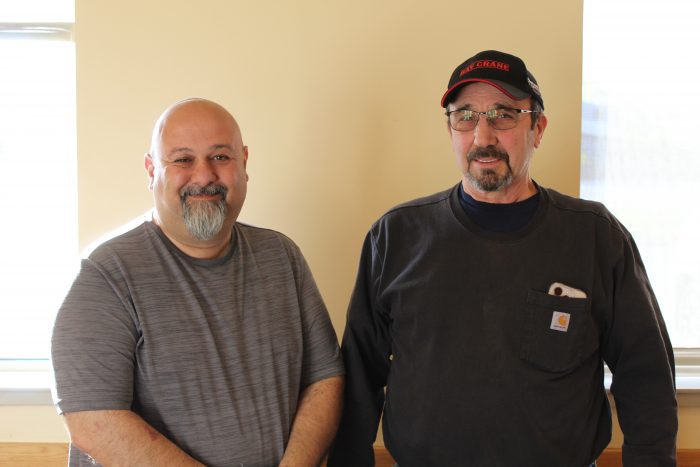Two prominent local figures of the Port Jefferson/Terryville area are departing from the community.
Ed Garboski and Sal Pitti, former president and vice president of the Port Jefferson Station/Terryville Civic Association, respectively, recently sold their homes, both headed for permanent relocation to the warmer climes of Texas and Florida. The two civic leaders formally transitioned their posts Tuesday, April 25, handing the reins to newly installed civic president Ira Costell and vice president Carolyn Sagliocca.
The departing officers caught up with TBR News Media in an exclusive interview, during which they reflected on the area’s projected growth, improvements in the standard of living and the vital role of PJSTCA.
Community planning
Garboski emphasized the 2014 Port Jefferson Station Commercial Hub Study as a critical component for the area’s long-term planning.
The study makes several recommendations for reconfiguring the commercial corridor along Route 112, including rezoning much of the area from J-2 local business zoning to J-6 Main Street zoning.
The plan also aims to “improve the physical environment, reestablish the hamlet’s historic character and augment the natural environment” to create a Main Street Business District in Port Jefferson Station.
While planning stalled for some time following the adoption of the hub study, Garboski expressed optimism that its recommendations would soon be ratified. “I was kind of hoping we’d have shovels in the ground before I left,” he said. “But it’s moving.”
The outgoing civic president also reflected upon the ongoing work to clean up the Lawrence Aviation Superfund site, with plans in the works to convert the existing space into a multipurpose community hub and recreational park space.
Much of these local aspirations, Garboski contended, will require assistance from the Metropolitan Transportation Authority, which has yet to commit to electrifying the Port Jefferson Branch of the Long Island Rail Road despite generations of residents and officials calling for the project.
“Once you electrify that line, then everything will fall into place,” he said. “You can move the train station to the other side of [Route 112] to eliminate the railroad crossing, put the storage at Lawrence Aviation, a solar field and open space.” He added, “I couldn’t think of a better thing to do with that.”
Public safety
During his tenure, Pitti said he had observed gradual improvements in the standard of living and public safety within the hamlet. His community involvement began with a local neighborhood watch program on his block, which soon expanded across the hamlet.
Pitti’s local crime program later merged with the civic association, where he integrated public safety forums into civic meetings.
“The civic became crime information and construction information,” he said, adding that over time, this approach helped “clean up the neighborhood.”
Civic’s role
Reflecting on his community work, Pitti regarded openness to new ideas and perspectives, along with a willingness to enter a dialogue, as necessary ingredients for effective community leadership. For these traits, he said the civic has amassed greater credibility with residents and government officials.
“We just built a good reputation for being willing to work with people,” he said. “We always said at meetings that you have to meet people in the middle. You can’t have it one way or the other, and I don’t care who you are.”
He added, “You have to always try to find that happy medium to make the majority of people happy because, unfortunately, not everyone will always be happy.”‘That’s the kind of community we have — when their back is to the wall, they will show up.’
— Ed Garboski
Garboski said the civic body requires continual community mobilization to represent resident interests. He maintained that the success of future advocacy efforts rests upon “strength in numbers.”
“That’s the kind of community we have — when their back is to the wall, they will show up,” he said. “They will fight. You have to have the right people leading them, you have to be willing to negotiate and stand your ground.”
Both leaders thanked the members of the civic and the greater community for their support and for entrusting them as leaders over the years. Though bittersweet, they expressed optimism for the community and civic to stay on their current upward track.
“For the bulk of it, I think we did a good job,” Garboski said. “And we had good people to work with, very good people to work with.”





